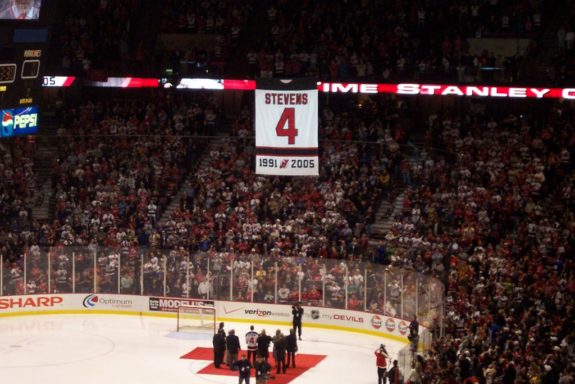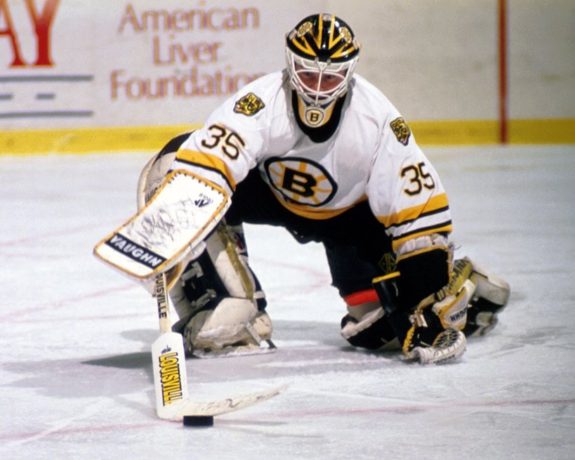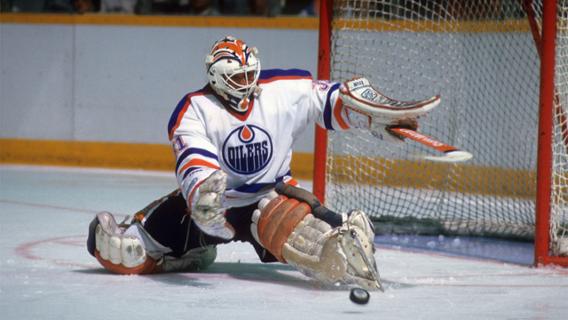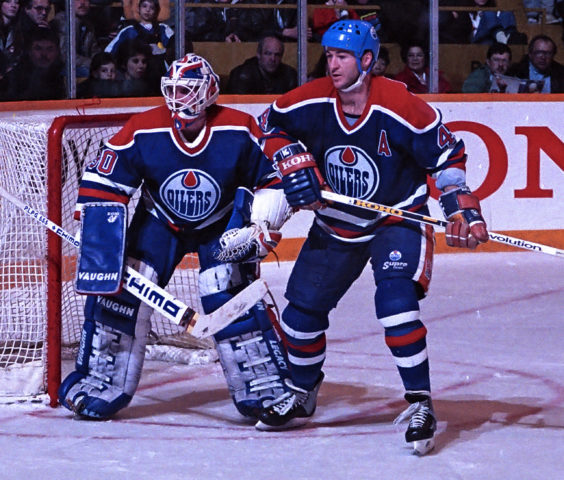Almost every NHL franchise has a way of honouring their greatest players. The most popular is through jersey retirement. This honour, which raises a player’s number to the rafters, thus immortalizing them, is considered the highest praise bestowed on a player outside of being elected to the Hockey Hall of Fame. Yet, it is usually reserved for the best of the best, for the legends who are cemented into the very fabric of the organization, to the point that another player wearing that number would be seen as a disservice.

Not every player can meet this incredibly high standard, and it seems wrong not to talk about the impact these other players have had on their organization. The Edmonton Oilers are a great example of a team with a plethora of very good players who are overshadowed by the legendary talent that they had throughout their first decade of existence.
Related: Edmonton Oilers Should Retire Ryan Smyth’s Number
One example is Bill Ranford. The acrobatic goaltender ranks as one of the best in franchise history but is often forgotten in favour of his predecessor, Grant Fuhr. In the spirit of honouring some of Edmonton’s forgotten greats, I thought it would be fun to look back at Ranford’s 449-game career with the Oilers.
The Trade
Despite spending most of his career in Alberta’s capital, Ranford got his NHL start with the Boston Bruins. Drafted 53rd overall by the Bruins in the 1985 NHL Draft, Ranford spent one more season in the Western Hockey League before making the jump to the professional level.
Related: Worst Trades in Oilers History
His first few seasons in the NHL were nothing to write home about. He jumped between the big leagues and the AHL for three seasons with the Bruins, amassing a total of 41 games and a subpar 19-21-2 record. At the ripe young age of 22, the Bruins had seen enough of the young netminder and decided to ship him and Geoff Courtnall to the Oilers in exchange for the veteran goaltender and proven winner Andy Moog.

The trade was interesting. The Oilers had been actively shopping Moog for a while and there were reports that the team was close to a deal with the Pittsburgh Penguins for goalie Steve Guenette, (from ‘Edmonton Oilers beats Boston Bruins to claim fifth Stanley Cup title’, Edmonton Journal, 05/25/1990).
That deal was quashed by Penguins owner, Eddie Debartolo Jr. who saw it as a stop-gap move that would eventually hurt the team (from pg. 184 of ‘The Pittsburgh Penguins: The First 25 Years’ by Greg Enright). Oilers GM Glen Sather turned to Boston and got Ranford along with Courtnall.
The real prize was Courtnall, not Ranford. The winger was in the midst of a 32-goal campaign and was considered an up-and-coming powerhouse scorer. It didn’t work out as he only played 12 games before being shipped off to the Washington Capitals. Ranford was an afterthought.
Related: Most Games Played by a Goalie in One NHL Season
It was a strange time for the Oilers. Ranford arrived a mere six months before the Wayne Gretzky trade shocked the sporting world, and many thought Edmonton’s time at the top was ending. It didn’t seem like a 22-year-old goaltender would do much to change that.
The Cup Run
Ranford’s first full season with the Oilers in 1988-1989 came with a condition. He had to take a backseat as Grant Fuhr’s backup. Fuhr was still in the prime of his career. However, this wasn’t the Oilers team of old. Edmonton was still coming to grips with Gretzky’s absence.

The Oilers put up a decidedly poor record that season, earning just 84 points, their lowest since the 1980-81 season. Fuhr also struggled, posting a losing record (23-26-3) for the first time in his career. This opened the door for Ranford, who had an impressive 15-8-2 record in the backup role. The team made the playoffs but lost in the first round to the LA Kings.
The following season was Ranford’s coming out party. A new head coach was in town, John Muckler, and it no longer seemed that Fuhr was guaranteed the starting position. The Oilers chose to run with Ranford, and it paid off. The team posted a better record and advanced to the playoffs with much more confidence than the season before.

Heading into the playoffs, it was clear that Ranford was their guy. Fuhr had struggled with injuries and it wasn’t clear whether he’d be available to play. Their first-round matchup was against the Winnipeg Jets, and the series didn’t go as planned, at first. In Game 1, the Jets score seven goals on Ranford and they took it by a score of 7-5. Was Ranford capable of anchoring a championship team?
That question was quickly answered as Ranford backstopped the Oilers to a seven-game series victory. They then exacted revenge on the Kings, sweeping them in the second round, and Ranford earned a shutout in the process. They then beat a very talented Chicago Blackhawks team in the Conference Final to set up a Stanley Cup series with the Bruins.
Related: Oilers History – The Importance of Jimmy Carson
In an ironic twist, the series pitted Ranford against the player he was traded for, as Moog was the starter in the Bruins’ net. On the backs of Ranford and Mark Messier, the Oilers dominated the Bruins and lifted their fifth Stanley Cup in franchise history. Ranford, who led all goalies in save percentage, played all 22 games during their Cup run and won the Conn Smythe Trophy as playoff MVP. He’s the only Oilers goaltender to win the award.
The significance of that 1988 trade was now realized. Ranford was the next great goaltender for the Oilers.
Lasting Legacy
The Stanley Cup win would kickstart a lengthy career for Ranford. He spent the next six seasons as Edmonton’s starting goalie and would tally 94 wins during that span. He only reached the playoffs twice more with the Oilers as their ageing core was slowly traded off and the team regressed into a rebuilding period. Despite this, Ranford remained the team’s backbone and acted as a leader.
He is the franchise leader in games played by a goaltender with 449, beating Fuhr by 26 games. Despite that most of his tenure was spent with a below-average team, he ranks second in wins with 167. He is by far one of the team’s most iconic goaltenders and, if it wasn’t for Fuhr, he would be the franchise leader in nearly all of the Oilers’ goaltending records.
Ranford was eventually traded back to the Bruins in January of 1996 in exchange for Mariusz Czerkawski, Sean Brown and a first-round draft pick. The move was made to make room for Curtis Joseph who had been with the team without a contract since training camp.
Ranford retired an Oiler after signing with the team for the 1990-2000 season when he played 16 games. He donned the Oilers jersey three more times playing in both the 2003 and 2016 Heritage Classic alumni games and was part of Rexall Place’s final game celebration.
He came to the Oilers in a trade that, at the time, seemed to mean nothing and then blossomed into not only a Stanley Cup champion but also a playoff MVP. He led the Oilers to their most unlikely championship and helped guide them through some of their darkest times.
He might not deserve to have his number immortalized among the rafters of Roger’s Place, but he deserves recognition as one of the team’s greatest goaltenders.